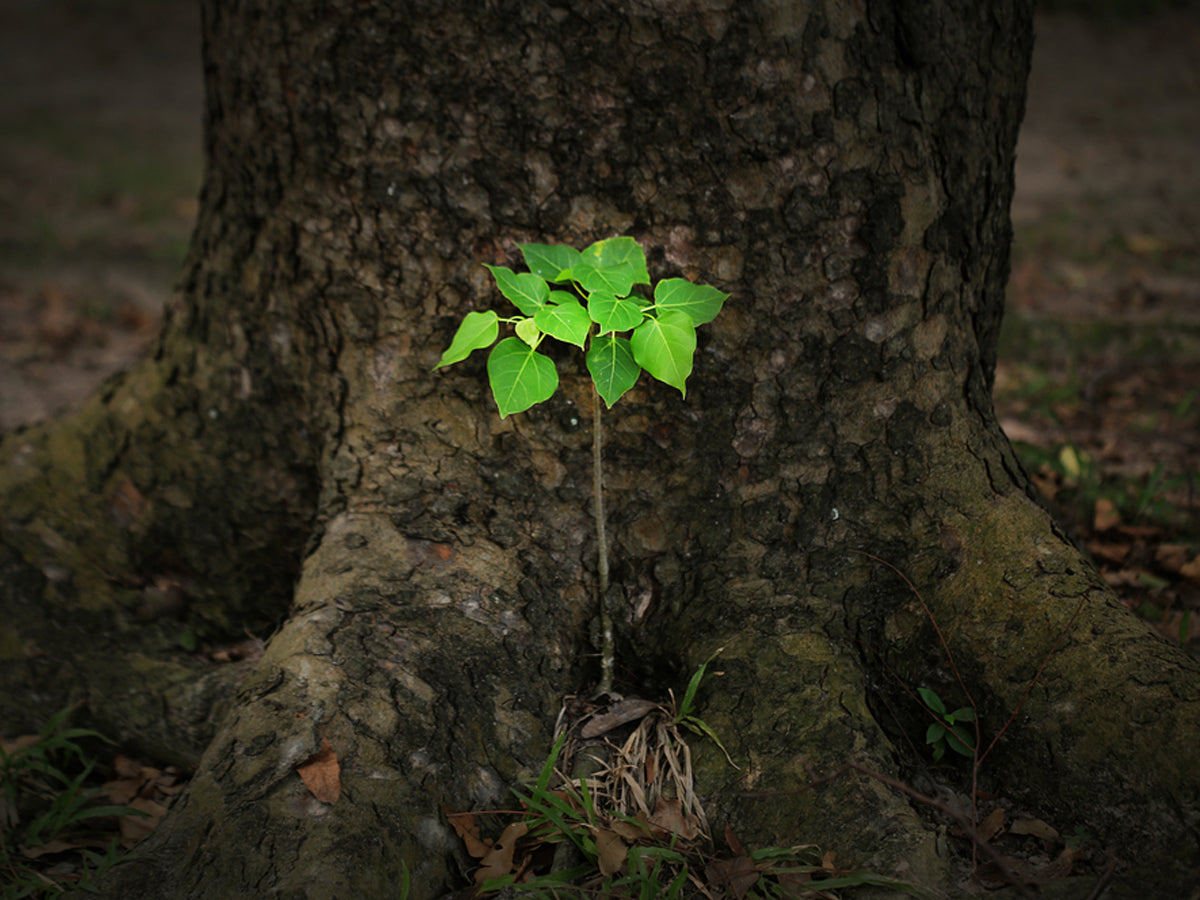How to Grow
Peepal Tree: Facts, Benefits, Uses, How to Grow & Care Tips
A seal depicting people praying to a peepal tree was discovered in the Mohenjodaro ruins dating from 3000-1700 BC.
So, it is true that the peepal tree has existed since the Indus Valley Civilization!
The peepal tree is also known as the bodhi tree, under which Gautam Buddha attained enlightenment. As a result, it holds great religious significance for Indians. The tree is considered the “Paradise of God.”
Wait, there’s more!
Did you know that the juice of peepal trees helps with asthma, diarrhoea, fever, toothache, cough, haematuria, scabies, joint pain, constipation, and many more?
The most interesting fact about the peepal tree is that, unlike other trees, it releases oxygen round-the-clock.
We've covered you if you plan to grow a peepal tree in your garden. In this blog, we will take you through the following:
- Facts to know about peepal tree
- How to grow a peepal tree at home?
- Care tips for peepal tree
- Benefits and uses of peepal tree
Let's get started.
Facts To Know About Peepal Tree
Native to the Indian subcontinent, Ficus Religiosa (peepal tree scientific name) is a magnificent tree.
- The peepal tree has heart-shaped leaves with long drip tips that radiate wisdom vibes.
- Known as peepal/bodhi/ or ashwatta in the local language, the tree holds great religious and historical significance.
- These trees are considered the mythical ‘World Tree’ of the Indian subcontinent.
- Ficus Religiosa is the scientific name of the peepal tree. The word ficus means ‘fig’ in Latin, the fruit of the tree. The word ‘religiosa’ means religion.
- Peepal is also the same tree under which Gautam Buddha received enlightenment.
- Peepal trees produce purple fruits encased in figs that ripen shortly after the foliage loses.
- The bark of the peepal tree peels off with growing age.
- Peepal trees can live up to 100 years and are fast-growing plants.
Now that you know about peepal trees, let's learn how to grow them at home.
How To Grow A Peepal Tree At Home?
Peepal is a vast tree and can be grown in various ways. Stem cutting, seeds, and marcotting are the three ways to propagate peepal trees at home. Here is a step-by-step guide on how to grow a peepal tree at home from cutting.
Soil Preparation
Make a mixture of loose soil, compost, and sand.
Ensure Proper Drainage
Add the mixture to a pot or a container of your choice. Make sure the pot has a proper drainage system.
Prepare the Cuttings
Take a peepal tree cutting, and make sharp cuts at the end, which you will dig in the soil. The size of the cuttings must be between 6ft to 7ft.
If you have taken a softwood cutting, you can leave some leaves on top of it. However, in the case of hardwood, it's best to remove all the leaves.
Now take an aloe vera plant, and apply the gel at the sharp ends up to three inches.
Plant and Water the Pot
Place them in the pot at least three inches deep in the soil. Add water to the soil, and ensure that it's well drained.
Peepal Requires Humidity to Grow
Now cut a plastic bottle in half and cover the stem. This will provide humidity to the plant.
After a week, remove the plastic bottle when the leaves start coming out.
Placement of the Plant Pot
While you can keep your plant pot in partial sunlight and direct sunlight, for appropriate results, direct sunlight is the best.
Care Tips For Peepal Tree

Now that you know how to plant and grow a peepal tree, here are some tips that will help you to take care of it.
Soil
The peepal tree grows well in loose, fertile, well-draining soil with a pH below 7. If the soil is compacted, the sacred fig will not grow properly, as the roots require proper aeration. The potting soil mix will require extra organic matter and sand to reduce its heaviness.
Light
The peepal plant grows well in direct sunlight and can even do well in partial sunlight. If you plan to grow the plant outdoors, always place it under the sun. The baby sacred figs are found in shady and low-light areas; big plants need more sunlight.
Watering
The Ficus religiosa requires very little water. They can survive for days in drought. The soil requires moderate amounts of water only when it is dry. Once watering is done, it is crucial to ensure that the excess water drains well into the soil. It is also a fantastic tree because it survives in dry and hot conditions. When the plant is not watered for a long time, it automatically sheds all its leaves, reducing water transpiration rates and storing water in its trunks to survive the drought.
Temperature
Like every Ficus species, Ficus Religiosa thrives well in hot and humid conditions. The best temperature for these plants is between 13 and 35 degrees Celsius. The plant will stop growing if the temperature falls below 10 degrees Celsius. The plant undergoes dormancy during winter and doesn't grow. The tree grows after the winter and grows best in summer and spring.
Humidity
Peepal trees are tropical plants, so humidity is essential. The plant grows best in 40 to 80% humidity.
Fertiliser
The bodhi tree requires organic fertiliser once every two to four weeks during growth. Never use fertiliser on the plant during the winter season. However, fertilisers are not required once the tree grows and establishes itself.
Pruning
To give the plant a better shape, pruning is required. Therefore, every time foliage starts growing, cut down a few leaves.
Benefits And Uses Of Peepal Tree

There are several health benefits of the peepal tree. These are:
Helps With Digestion
Drinking the decoction of the bark of the peepal tree with jaggery and salt helps treat intolerable stomach aches. A fluid is prepared from the sprouts of peepal and cooked in milk, which is then filtered to treat diarrhoea. The inner bark of the tree is often used to provide relief from repeated vomiting. The peepal leaf acts as a laxative and is used to treat constipation.
Good for Heart
The peepal leaves are also beneficial in treating heart diseases. The leaves are used to treat palpitations and weakness in the heart.
Treats Fever & Joint Pain
The cooling nature of the tree helps with fever and rheumatism. If you ever face such a situation, always consult an Ayurvedic doctor instead of self-medicating.
Help with Asthma
The powder of dried peepal fruit mixed with water can help treat asthma. Earlier, people used to drink the powder with honey to improve their voices.
Treats Skin Conditions
The fluid received after heating and boiling the peepal tree bark is known as a decoction; it helps to deal with eczema and itching. The paste of water and bark helps with skin eruptions. There are also several uses of the peepal tree to treat wounds.
Conclusion
We have provided everything you need to know about growing a peepal tree at your home. Enjoy growing the sacred and beautiful bodhi tree in your garden.
FAQs on Peepal Tree
Can a peepal tree be used for wounds?
Numerous ayurvedic physicians use powdered bark from peepal trees and mix it with sesame oil. It helps in curing wounds and other external injuries. One can also boil the stem bark of the tree to improve healing.
Can the peepal tree relieve hyperpigmentation?
According to certain studies, the latex gathered from the peepal tree helps relieve hyperpigmentation. However, it mainly helps with the pigmentation of the face.
Why is the peepal tree known as the sacred fig?
Peepal trees have efficient medical uses. Furthermore, followers of Hinduism, Jainism, and Buddhism believe the tree to be sacred. Thus, it is known as the sacred fig.
Does a peepal tree release oxygen for 24 hours?
The peepal tree releases oxygen throughout the day and night.
What is the lifespan of a peepal tree?
The peepal tree, also known as the sacred fig, can live up to 2500 years and more. Thus, the usual growth span of the tree is between 50-3000 years or more in some cases.



